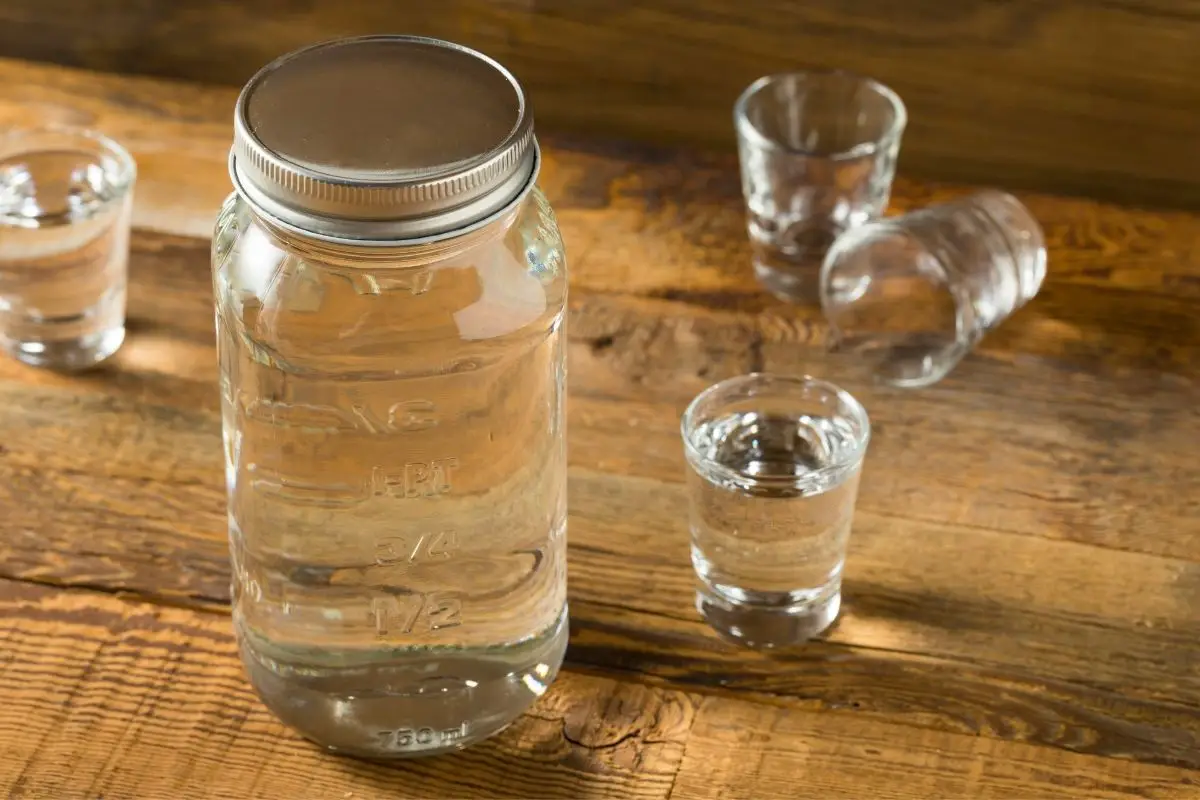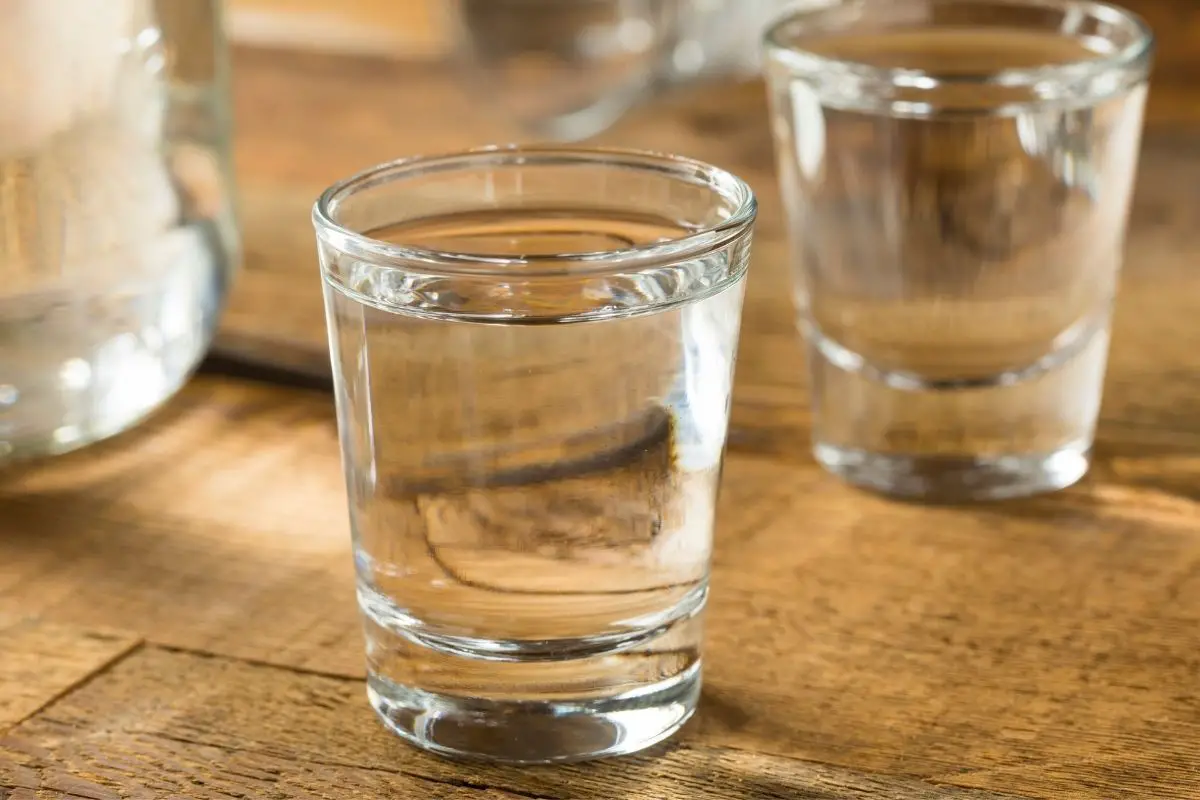Moonshine is a drink with a complicated past. This extra-strong booze is infamous for its illegal production during the Prohibition era, as well as the health issues it is rumored to cause. It was initially made as a way to bypass the laws at the time, but moonshine is still just as illegal as it was back then.

In the 1920s, the government passed laws against the production and sale of alcoholic beverages.
The goal of Prohibition was to reduce crime and corruption and improve public health. However, there was a lot of pushback against Prohibition, and one of the unintended consequences of the ban was that some people started producing and distributing their own illegal liquor, known as moonshine.
While some modern versions of ‘moonshine’ are perfectly legal, these hold very few similarities to the original (apart from their high alcoholic content). More traditional moonshine making is still illegal, but just what makes it that way?
If you’ve ever wondered about the laws surrounding moonshine and its continued Prohibition, then you’ve come to the right place.
In this article, we’ll take a closer look at why exactly moonshine is illegal (it might not be the reasons you’re thinking of!). So let’s get started, shall we?
What Exactly Is Moonshine?
As mentioned above, moonshine is one of the many nicknames given to the illegal, homemade liquor produced during Prohibition. However, because of its unregulated nature, it’s hard to pin down one specific definition for the drink.
Moonshine comes in many forms, with different strengths, flavors, and ways of making it; while modern liquors that have been given the name ‘moonshine’ are simply strong alcohols that are highly regulated, the original stuff had no such restrictions.
Most moonshines were made with a moonshine still, a device that distilled and purified the alcohol content within the liquid.
Moonshiners typically used one of two methods to produce their drink: through corn mash (a mix of ground grains heated in water to create alcohol), or by fermenting and distilling fruit juices and other alcohols.
Unlike most alcohols, which are aged for a time after distillation to improve their quality and flavor, moonshine would be distributed and drunk soon after production; this is because the illegality of moonshining made it too risky to keep large quantities of the alcohol in one place for too long.
Because of how varied the production and quality of moonshine was during Prohibition (and since then), you can’t really specify a single strength or flavor for the drink.
The alcohol content of moonshine can vary wildly, ranging anywhere from 40% ABV to a whopping 95% ABV in its pure form depending on factors such as its ingredients and distillation time.
You can also find variations in its taste based on the same factors, as well as its color (although most moonshines are a clear liquid).
Why Is Moonshine Illegal?

So now that we’ve taken a look at what moonshine is, we can start getting into the legal reasons behind its ban. There are three main reasons behind why moonshine is still illegal, despite Prohibition ending almost a century ago. Here’s a breakdown of each one.
Health And Safety Risks
This is the most common reason given for the banning of moonshine, as well as one of the reasons for Prohibition being enacted in the first place.
Because the production of moonshine is unregulated by necessity (you can’t really have official regulation of an illegal substance), there is a much higher risk of health issues caused by the making and/or consuming moonshine.
Moonshine has an extremely high alcohol content, sometimes as much as 95% ABV in its undiluted form. This strength makes it dangerous to drink in large quantities, which is compounded even further by not knowing exactly how much alcohol is in the moonshine.
There’s also the chance that other toxic and harmful materials have entered the moonshine during production, such as chemicals like lead from the stills, or toxic methanol used to bump up the alcohol content of the drink.
Making moonshine is also risky, as strong alcohols are at risk of combustion, and moonshine stills are often poor-quality and liable to explode from the heat and pressure of distillation.
While the technologies and science surrounding the production of moonshine are much more advanced and accessible than in the 1920s, there are still plenty of health and safety risks surrounding the making and drinking of moonshine.
These include alcohol poisoning, blindness, liver failure, and even death.
Leftover Prohibition Laws
While Prohibition ended close to 100 years ago, its lasting effects can still be felt today. These include massive lost tax revenue at the time (around $11 billion by today’s standards), as well as an increased prison population that has only continued to grow since.
The illegality of moonshining is one of the most prominent leftover aspects of Prohibition, and is one of the few remaining criminal offenses to continue since the act was repealed.
Legal moonshine is becoming a more and more popular trend amongst many distilleries. This drink, while not exactly the same as authentic moonshine, is typically a stronger-than-usual liquor that has to follow specific laws regarding its production and distribution.
For instance, legal moonshine can’t be stronger than 62.5% ABV, and has to be distilled under controlled conditions to prevent any contaminants or toxins from making it dangerous to drink.
While legal moonshine isn’t the same as the real stuff, it’s definitely a much safer (and tastier!) alternative.
Issues With Tax
This is the most prominent reason behind the continued ban on moonshine, although most people don’t realize it. Alcohol is one of the most highly-taxed substances in the USA, and stronger alcohols can be taxed much higher than weaker ones.
For example, an 80-proof spirit such as vodka or whiskey is taxed at ~$2.14 per 75cl bottle. Compare this with a mere $0.21 for a bottle of wine, and just $0.05 for a can of beer, and it’s clear to see why the government doesn’t want people making tax-free booze in their basement.
A large part of this issue stems from the aforementioned loss of tax revenue during the Prohibition period. That missing $11 billion resulted in many states relying on tax revenue to fund their state budget, and growing inflation has only made the issue more serious.
In 2015 alone, the federal government collected $9.9 billion in excise tax from the sale of beer, wine, and spirits.
It’s hard to tell just how much tax is lost from illegal moonshine production, but it’s enough for the government to continue to crack down on its production and distribution.
Final Thoughts
So there you have it – while issues such as health risks and the after-effects of Prohibition laws certainly contribute to the illegality of moonshine, the main culprit comes down to missing taxes.
While legal moonshine is available for you to try, it’s unlikely that the real stuff is ever going to be legalized as long as there are so many issues surrounding it.
Moonshine may not be as dangerous or as harmful as it was a century ago, with better technology and more advanced science behind it. That said, it’s still illegal to make and sell it, so to be on the safe side you’re better off just sticking with the legal stuff!
- Vevor Still Instructions - June 12, 2023
- Best Proofing Parrots For Home Distilling - February 1, 2023
- What Is A Porter Beer? - June 12, 2022
